The Whistletrip: Itinerary
- Day 1: Segovia
- Day 2: Toledo
Why Go
New York’s Metropolitan Museum of Art inspired a trip to Madrid’s medieval surrounds. I had been admiring the display of El Greco‘s dramatic painting, The Vision of St John – its expressionistic style so far ahead of its early 17th century time – and then spotted View of Toledo. The dark, theatrical depiction of his adopted city showed a magnificent Alcázar and the stately Alcántara Bridge. I had to see these in person.
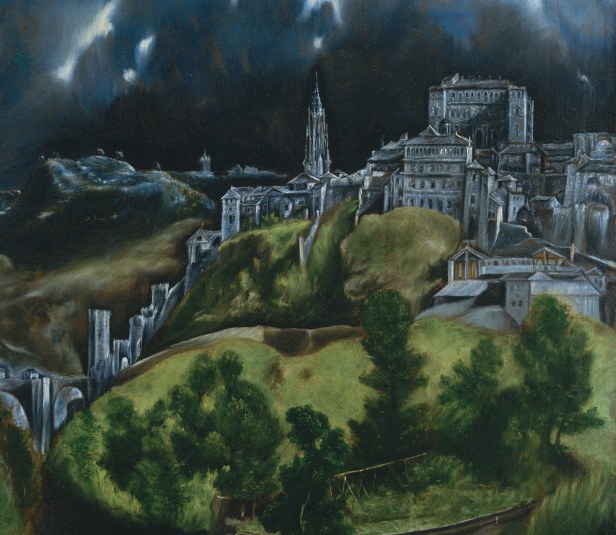
Toledo is just a 30 minute train ride from Spain’s capital, and is one of several majestic ancient cities that offer a perfect day trip from Madrid. Segovia, a UNESCO World Heritage site also 30 minutes away, is home to a jaw-dropping Roman aqueduct, a beautiful Gothic cathedral and winding cobbled streets. Each deserves a full day of exploration.
To Travel Agent or Not To Travel Agent
Not. Kayak and booking.com are all you need.
Practical Planning
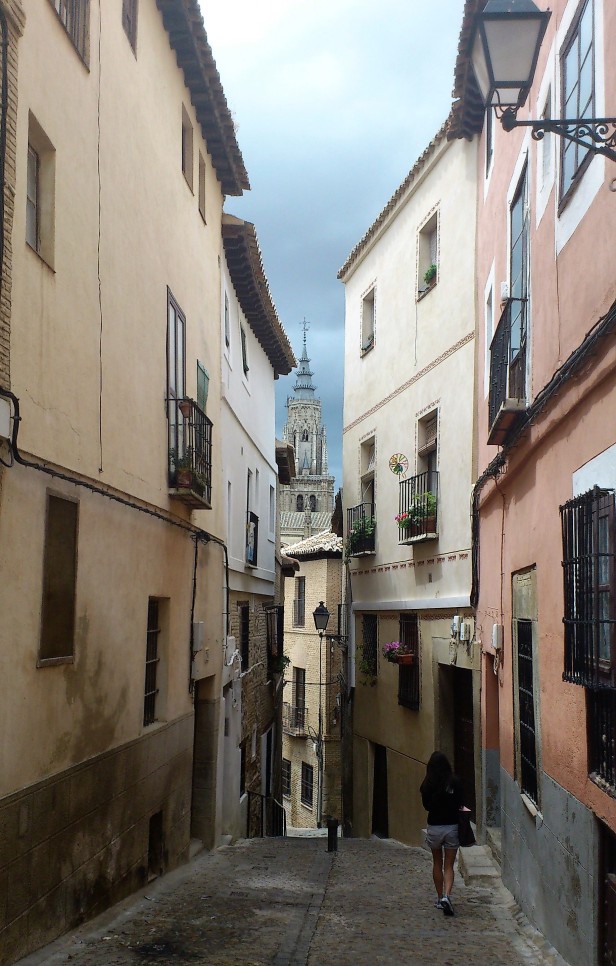
- Stay: I based myself in Madrid for both nights, at the Westin Palace. The capital offers a greater range of good value hotels than either Segovia or Toledo does.
- Mobilize: Fast, clean, comfortable trains run from Madrid to both cities. The train to Toledo leaves from Atocha station. Take the train from Charmatin station to reach Segovia and upon arrival hop on the local bus (clearly signposted) to the aqueduct.
- Pack: Good walking shoes. Both Toledo and Segovia are hilly and the best views of the cities come from towers at their peaks.
Day 1: Segovia
When the bus from Segovia train station drops you off at Plaza del Azoguejo, you are immediately struck by the soaring Roman aqueduct towering above the square. This feat of engineering consists of two tiers of arches and 221 pillars, together channeling water at heights of up to 100 feet. Incredibly, neither mortar nor cement hold the structure together: its granite block stones were cut to withstand the load with perfectly tessellated tension. Climb the stairs of the city wall for a closer look at this 50 BC marvel.
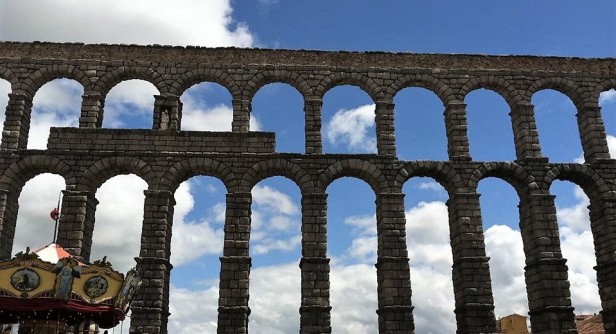
The streets of Segovia continue to brim with history with every step through them. Walk along Calle Cervantes – past the Renaissance mansion Casa de los Picos, with its façade covered in pyramid-shaped reliefs – then up Calle Juan Bravo past Iglesia de San Martin. Continue along Calle de Juderia Vieja to meet the stunning Catedral de Segovia at its end. This Gothic cathedral in the Plaza Mayor stands on the spot where Isabella I was proclaimed Queen of Castile in 1474. She and her husband, Ferdinand II of Aragon, sponsored Christopher Columbus’ 1492 voyage to the New World, setting in motion Spain’s establishment as a global naval superpower.
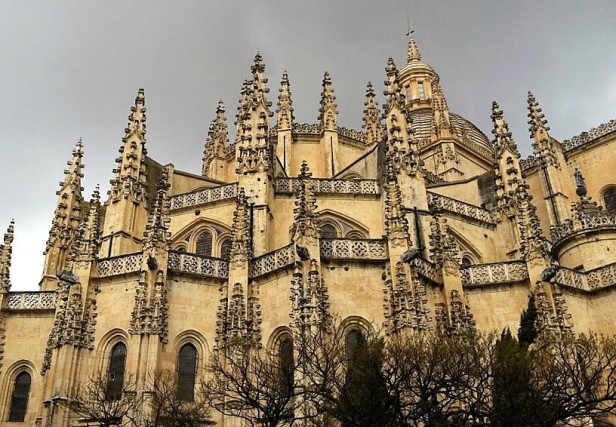
One of Queen Isabella’s favorite residences was the Alcázar of Segovia, which is a fairytale jewel in the city’s crown. Laid on the foundations of a Roman fort, the Alcázar was home to several Castilian monarchs in the Middle Ages: its distinctive conical slate spires were added as part of a renovation by King Philip II. The fortress later served as a state prison until becoming the Royal Artillery School in 1762. Inside, its Armory, the plush Throne Room and sparkling stained glass windows are all well worth seeing.
Wrap up the day with supper at Mesón José María – their house dish, classic Castilian cochinillo, is delicious.
Day 2: Toledo
Long known as the “City of Three Cultures”, Christians, Muslims and Jews have co-existed together in Toledo since the 8th century, together building an awe-inspiring collection of churches, mosques and synagogues.
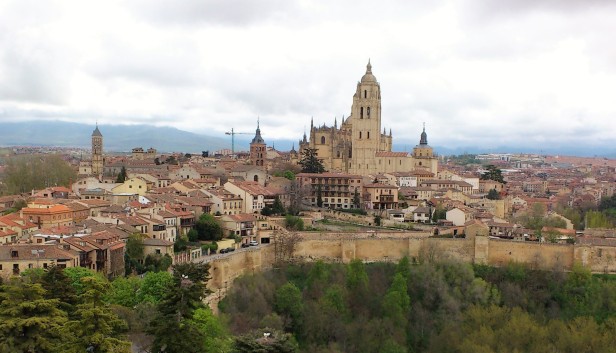
These houses of worship reflect cross-elements of each: the Santiago del Arrabal draws on the structure of a pre-existing mosque and includes a tower reminiscent of a minaret, while the 1357 Sinagoga del Transito has a magnificent Mudejar coffered ceiling.
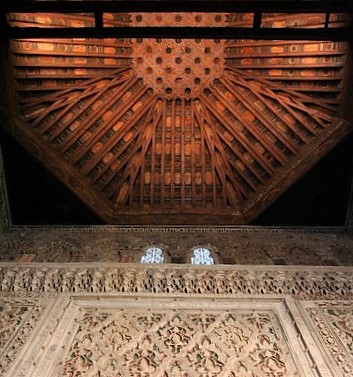
The mighty walls of Toledo are punctuated by ornate gates that similarly reflect its diverse religious heritage. Enter through the Bisagra Gate to see fine Muslim engravings or through the Sol Gate for proximity to an early Christian sarcophagus.
While the architecture of this UNESCO World Heritage city is exquisite art in and of itself, Toledo is also home to a fine collection of world class painting. The Gothic Primate Cathedral of Saint Mary of Toledo holds in its Sacristy works by Goya, Titian, Rubens, Van Dyck and Bellini. For a comprehensive collection of paintings by Toledo’s most famous artist, head to The El Greco Museum in the Jewish Quarter. Opened in 1911, the museum buildings include a 16th-century house with a courtyard and a recreation of El Greco’s home.

Perhaps the greatest joy in Toledo comes from getting lost in its maze of winding, narrow streets. Walls are painted in muted pastel shades, flower baskets hang from Juliet balconies and iron lanterns illuminate the cobblestones. Turning each corner seems to bring a new peek at a beautiful spire or ancient tower.
Head on foot in the direction of the Alcázar – which basically means, just walk up. Restored by Charles I – or Holy Roman Emperor Charles V – in the 16th century, this rectangular fortress, with a square tower on each corner, dominates the skyline. Perched atop a hill at the city’s highest point, the Alcázar offers spectacular views over the plains of Castilla-La Mancha and the River Tagus at dusk.
© Ann Berry


